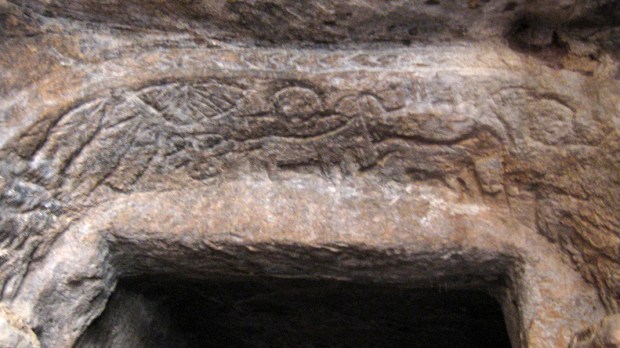There isn’t much known about Christian history in Malta in the first centuries following St. Paul’s supposed shipwreck there in the year 60. But the walls of a 1,600-year-old catacomb can offer much silent testimony.
According to Malta’s Independent newspaper, Hal Resqun tomb is of significance to Malta’s archaeology due in part to the refined use of decoration.
“The decorative schemes inside the catacomb imitate Roman architectural motifs, including a number of fluted columns etched into the rock face of the tomb,” the newspaper reported in 2006.
It was that year that the Paleochristian catacomb was rediscovered, nearly a century after it was first discovered. Debris from the building of the nearby international airport of Malta in the 1950s covered up the catacomb and led to its neglect.
Now the tomb is the subject of renewed attention because of a proposed road and tunnel project that will help ease traffic but which, some say, will threaten the archaeological gem.
The catacomb is unique in that it includes two scenes cut in low relief into its rock face, according to the Independent report. “These scenes include both human and animal figures, and offer a very rare insight into what religious notions early Christians in Malta entertained with respect to death and the afterlife.”
“The graffiti of a biblical scene are thought to be unique in the world,” says the Times of Malta.
According to the Catholic Encyclopedia, the Church in Malta was founded by St. Paul, although a scholar recently called that assumption into question.
The first bishop for Malta was St. Publius, whose name is mentioned in the Acts of the Apostles. After ruling the Maltese Church for 31 years, he was transferred in the year 90 to the See of Athens, where he was martyred in 125, the Catholic Encyclopedia notes.
Though a complete list of bishops from the days of St. Paul to Constantine has been made out, its authenticity is more than doubtful. Still there seems no reason to suppose that, during the early days of persecution, the flock was long without a shepherd. In 451 there was an Acacius, Melitenus Episcopus, whose name is subscribed to the Acts of the Council of Chalcedon.
It was around this time that the Hal Resqun tomb was constructed.
Patricia Camilleri and Ann Gingell Littlejohn in Treasures of Malta provide a detailed description of the catacomb, saying that it is “four courses below road level.”
The doorway is flanked on the left by two engaged columns, one in the Doric style, the other with twisted fluting. Over the entrance, within an apsed arch is a carving of two birds facing each other, head to head, almost certainly a peahen and a peacock which seem to be feeding a chick. Since pharaonic times, the peacock has been considered a symbol of immortality. In some cultures the spots on its fan tail were seen to evoke the stars in the heavens. It is one of the many symbols which slipped seamlessly from pagan to Christian iconography.
The Catholic Encyclopedia goes on to say that in 501 Constantinus, Episcopus Melitenensis, was present at the Fifth General Council. In 588 Tucillus, Miletinae civitatis episcopus, was deposed by St. Gregory, and his successor Trajan elected by the clergy and people of Malta in 599. The last bishop before the Saracen conquest was the Greek Manas. After the Council of Chalcedon in 868, he was unable to return to his see, which was being invaded by the Arabs, and not long after we find him in chains in a Saracen prison at Palermo.

